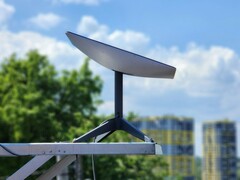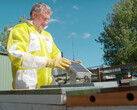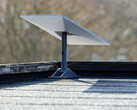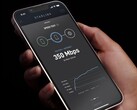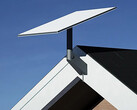Virginia has announced the allocation of $613 million from the United States’ Broadband Equity, Access, and Deployment (BEAD) program, and while Starlink has secured a portion of the funding, the majority of the investment is going to fiber internet projects.
Earlier this year, the Trump administration revised BEAD rules to embrace “technology neutrality,” allowing satellite internet providers like SpaceX’s Starlink and Amazon’s Project Kuiper to be considered on equal footing with fiber operators. The changes removed the program’s original “fiber first” approach, which prioritized high-capacity wired connections. The Commerce Department described satellite technology as a cost-effective and relatively quick solution for connecting rural and underserved areas. This change opened the door for companies such as Starlink to bid on a wider range of projects nationwide.
In Virginia’s case, the new approach has resulted in Starlink receiving just under $3.3 million to connect 5,579 underserved locations, which equates to roughly $584 per site. Amazon’s Project Kuiper has been awarded $4.4 million to serve about 7,000 locations, costing around $641 per site. Together, these satellite projects account for a small fraction of the total funding, with only $7.7 million, or about 1.3 percent of the state’s BEAD allocation, going toward satellite connections.
The rest, approximately 81 percent of the funds, will be directed to fiber buildouts, with the state awarding more than $171 million to All Points Broadband alone to connect nearly 20,000 locations at an average cost of $8,655 per site. In some areas, these fiber connections are expected to deliver speeds of up to 10 gigabits per second. Officials in Virginia have indicated that the emphasis on fiber is driven by performance considerations rather than short-term cost savings.
Drew Garner, a director at the Benton Institute for Broadband and Society, said the state’s bidding process placed a strong focus on speed, latency, and scalability, as well as the ability to meet future demand. The process also took into account environmental factors such as tree coverage, which can affect the reliability of satellite services. Starlink’s system requires a clear view of the sky, and in heavily wooded areas service interruptions are more likely. In response, SpaceX has recently promoted its beam-switching technology, which it says can help mitigate issues caused by obstructions.
While Starlink’s inclusion in the funding awards marks progress for satellite providers under the new rules, some broadband policy experts remain skeptical about its long-term role in publicly funded deployments. Fiber’s capacity to deliver symmetrical gigabit speeds without degradation over time makes it the preferred option for permanent infrastructure.
By contrast, satellite networks face capacity limits and can experience performance drops in areas where too many users connect to the same satellite beam. In parts of the Pacific Northwest, for example, Starlink has implemented a $1,000 demand surcharge to deter new sign-ups in already congested areas. The revised BEAD program does impose certain performance requirements on satellite providers. SpaceX will need to reserve enough capacity to ensure download speeds of at least 100 megabits per second and upload speeds of 20 megabits per second for the households covered by the program.
Eligible users in Virginia will receive a free Starlink dish during the 10-year service period. However, states can no longer set pricing for internet plans targeting low-income users. Providers are only required to offer at least one qualifying low-cost plan, which can be one of their existing packages. This has raised concerns about affordability, with Starlink’s standard service currently priced at $120 per month. Garner noted that for many communities, the main barrier to internet access is not the lack of infrastructure but the ongoing cost of service.
Evan Feinman, the former director of the BEAD program who resigned in protest of the rule changes, praised the state’s approach within the limits of the new regulations but criticized the forced inclusion of satellite connections. He argued that shifting some households from fiber to satellite means higher monthly bills and slower speeds. Supporters of the changes, such as Joe Kane of the Information Technology and Innovation Foundation, view Virginia’s awards as a success story, noting that the average cost per location under the new rules is far lower than what was typical in earlier BEAD proposals.
Governor Glenn Youngkin welcomed the outcome, stating that the revised rules allowed the state to save $200 million, which represents a 25 percent reduction in taxpayer spending on broadband projects. Time will tell how other states structure their BEAD allocations under the updated guidelines.
The Commerce Department has set a September 4 deadline for states to submit their final proposals, although extensions are available. Meanwhile, SpaceX and Amazon are pursuing bids in other states, with Texas seeing particularly aggressive competition as Starlink seeks to serve over 244,000 locations and Project Kuiper targets more than 160,000.




